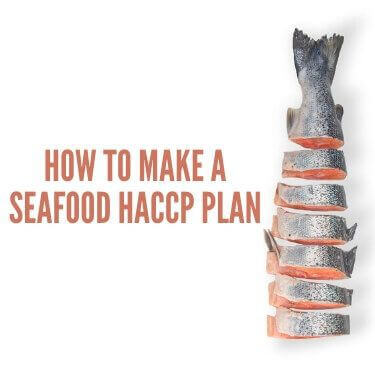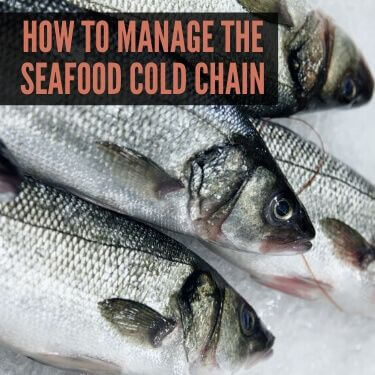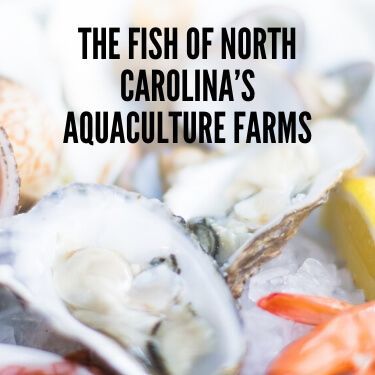Key Takeaways:
Shipping fresh fish can be lucrative, especially when a commercial fishery is paired with a suitable carrier. However, following the proper rules and regulations to manage the cold chain and keep the fish at the right temperature is essential.
Like any other food produced in the United States, whether fresh or frozen, the government has set up agencies to regulate these consumer products. These agencies help ensure the seafood that consumers consume is safe. On a federal level, the following organizations have a prominent role in making sure goods regulations are followed:
The Joint Subcommittee of Aquaculture and the Animal and Plant Health Inspection under the USDA help keep consumers safe. Each state has its own set of laws besides any federally mandated laws or regulations.
Compliance with these organizations is mandatory and not optional. It is up to the aquaculture operator to know the federal and state rules and regulations. Failure to comply with government bodies can result in fines and temporary closures.
A Hazard Analysis Critical Control Point (HACCP) is a way to pinpoint and handle biological, physical, or chemical hazards. The entire process of growing or producing seafood for distribution for consumption is measured - including steps dealing with storage and handling in aquaculture fisheries.
This HACCP system aims to reduce potential risks to an acceptable level or eliminate them entirely. Such procedures are necessary for people who raise and ship fish as food. The examples of seafood covered are all-inclusive and cover farmed fish and shellfish.
While there are exemptions in certain areas within a supply chain, HACCP regulations are in effect for those who run fisheries. All seafood manufacturers are required to follow the Goods Manufacturing Practices (21 CFR 110) and Seafood HACCP (21 CFR 123) laws.
The following aspects are monitored in fisheries to properly evaluate the seafood handling plan:
FDA inspectors will ensure your facility follows the Good Manufacturing Practices and the Seafood HACCP plan. The Fish and Fishery Products Hazards and Controls Guidance is a resource that the inspector will use to determine the hazards and how to control them.
After examining the required records, the inspector can judge the efficiency of your HACCP plan. Once the fishery operator obtains the inspector's report, any questions or concerns can be addressed with the inspector. The FDA has a questions and answers section for commonly asked questions on their site.

Generally, the process for HACCP certification is time-consuming, specifically because the FDA does not cut corners or take unnecessary risks. The FDA takes the safety of the nation’s seafood supply chain very seriously.
Getting certified for a HACCP plan is a remarkably straightforward process, regardless of the attention to detail during the certification process. Before being allowed to set up your fishery and sell the fish, the following steps are required:
Standardized training or equivalent job experience is required to perform HACCP plan development. A record review of Critical Control Point monitoring, corrective actions, and process control instrument calibration must be conducted by a trained or otherwise qualified individual.
The Seafood HAACP Alliance Basic training course or both Segment 1 and Segment 2 (online and live courses) must be completed to meet the training requirements set and established by the HAACP.

Before managing a seafood cold chain, you must first understand what defines a seafood cold chain. A cold chain keeps the fish cold from when it is caught at 32 degrees Fahrenheit (0 degrees Celsius). Keeping the fish cold is essential in keeping the fish fresh while reducing the potential for spoilage.
Any time the temperature rises above 33.8 degrees Fahrenheit (one-degree celsius), the cold chain is considered broken, increasing the amount of loss experienced. Extreme temperatures, in general, should be avoided.
The simplest cold chain possible is a fishery that transports directly to a retailer. With fewer steps in the cold chain, there is less room for error. The more complex cold chains are fisheries that transport to collectors or auctions, which then transport to wholesalers and retailers.
It requires much more collaboration in a complex cold chain to ensure the supply chain doesn't break down. In some cases, there may be multiple transport points, and it is not always a simple transfer of seafood from the fishery to the end customer.
As far as the transport company is concerned, they keep the cold chain alive while loading, storing, transporting, and unloading the product. These steps are critically essential in the process of transporting without disruption.
Temperature monitors are used continuously to maintain the cold chain. Working and accurate temperature monitors are crucial to any operation while adhering to proper protocols and procedures.
Fresh fish needs to be cooked and consumed within 8 to 9 days of being taken out of the water. If it is not consumed in that timeframe, it must be frozen, which is the handling standard among many fisheries when staging fish for transport or consumption.
Packaging fish for shipping is an essential aspect of the process. When done right, it can help prevent unnecessary spoilage and losses. Getting fish ready for packaging is simple: the fish are caught, beheaded, have their guts removed, and are then skinned and filleted.
This procedure is referred to as the primary process. If the fish in question is going to be converted into something such as fish fingers or coated fish steak, then that is known as the secondary process and is often shipped with frozen gel or dry ice.
As mentioned earlier, these perishable items are fresh, cleaned, and cut. The secondary process is about maintaining a degree of freshness and yet meeting the needs of mass-market delivery services. Cardboard boxes packed with gel packs and cooler boxes help facilitate seafood shipments of frozen fish that were freshly caught.
In general, you’d have to go to a reputable fish market or a grocery store that explicitly states that the fish they are selling you has never been frozen or flash frozen. Otherwise, there’s a pretty good chance that even “fresh” fish has been previously frozen.
Fish are packaged in insulated containers with ice to keep them at the desired temperature or paired with a refrigerated truck to prevent spoilage. Besides keeping the fish cold en route, it’s good to use ice so the fish is already chilled before getting on a truck.
Loading fresh fish onto a truck and transporting it to all points in the U.S. still stands as the most efficient way to ship massive quantities of seafood. Dealing with the shipment of fresh fish is a delicate balancing act.
While other animal-based products also deal with a short turnaround, fish can go bad quickly and be unfit for human consumption fast. With a high risk of perishability, streamlining the delivery process can help limit the loss of valuable seafood on trucks.
A refrigerated truck would be the best bet because the cold would slow the fish's natural decaying process. This refrigeration method gives the shipper some valuable time en route to stores and restaurants while maintaining controlled temperatures.
Coupling with a refrigerated truck is staying on a strict delivery schedule. Fresh fish is the opposite of perishable food, so delays can become very costly. Fresh fish must be cycled quickly, regardless if it is being temporarily stored.
Farmed fish has an advantage over wild-caught fresh fish. The reasoning behind this is that farmed fish can be supplied and predicted on a stable basis. Whereas wild fish completely depends on how lucky fishermen were out at sea that day.
Finding an expert logistics company that can navigate the trucking lanes successfully is paramount. Shipping seafood without unnecessary spoilage remains invaluable to any fishery operation. The best kind of fresh fish is transported live, and live shipping fish is different than shipping fresh caught, cleaned, and filleted fish over ice.
They should be shipped in special containers that hold water and are extra saturated with oxygen to combat ammonia and carbon dioxide from the natural respiration of creatures with gills within a stable truckload.

As far as aquaculture goes, North Carolina is one of the leaders in America in the field of raising fish. Looking at the wide variety of fish and crustaceans they raise for human consumption, it’s not hard to see why. The market of North Carolinas aquaculture is responsible for much of the state's seafood shipping.
Aquaculture refers to farm-raising fish and is an entirely separate entity from commercial fishing. That form of “fresh catch” fishing takes place in the Atlantic Ocean off the state’s coastline. The practice of commercial fishing takes place 24 hours a day annually.
In aquaculture, holding basins are used to corral the fish so that the oxygen levels in the water can be controlled. The water’s temperature is also controllable and regulated. In the state of North Carolina’s aquaculture, the range of fish is impressive, even without fresh salmon, which is very popular in the United States. Aqua farmers of the state produce the following forms of fresh seafood in their fisheries.
Crustaceans:
Fish:
Of the fish listed, trout is by far the most abundant and produced. Much of trout's abundance is due to the western part of the state’s cool climate and mountainous terrain. The terrain and climate are conducive to producing millions of pounds of fish.
This region of North Carolina has clean water and minimal pollution, which offers trout an environment to thrive. There is also a demand to stock lakes with farm-raised trout annually for recreational fishing.
Three fish, in particular, make up a vast majority of North Carolina’s aquaculture output — trout, catfish, and hybrid striped bass — accounted for 86 percent of the total value for the industry in 2018. By far, trout is North Carolina’s prized aquaculture contribution to the seafood world.
In 2018, more than 5 million pounds of fish were produced with a total combined value of $23.6 million. Trout alone accounts for 40 percent of the total value of North Carolina’s aquaculture.
Catfish and Hybrid Striped Bass are next on the list of the most produced fish via fisheries, with the pair combining for about 46 percent of the state’s yield in a given year. Fish are prized for their edibility, but both fish, especially the bass, are also stocked in freshwater, where they can be fished for sport.
Shellfish like crawfish, clams, oysters, shrimp, and ornamental baitfish, make up the rest. Shellfish are more likely caught in the wild, and the amount farmed in North Carolina makes up less than 6 percent of the total fishery efforts in the state.
As far as the rest of the world, North Carolina contributes to the global annual production of farm-raised fish every year. The state has become a significant player in terms of domestic fish supply. The table below illustrates the shift from commercial fishing to farm-raised fishing on a global scale.
| Global Fisheries Captures | Global Aquaculture Production |
| 91.3 to 96.4 million tons | 32.4 to 82.1million tons |
| Annual growth 5.6% | Annual Growth 152.4% |
Over the years, the growth in global aquaculture has been on the rise. The above-outlined statistic dictated that an above 150% growth in aquaculture has occurred globally. The net tons of fishery production has ballooned to over 178 million tons as of 2018.
With growing demand, fisheries can curb the various restrictions placed on commercial fishing due to what's known as “overfishing.” In fact, fish farms help curb overfishing and also provide a steady supply of fresh fish. North Carolina’s aquaculture is a leader in this category, especially in the domestic United States.
In North Carolina specifically, any person or group practicing aquaculture must obtain an Aquaculture Operation Permit (AOP) through the North Carolina Department of Marine Fisheries. This permit is for producing fish for human consumption and other reasons.
The North Carolina Department of Agriculture & Consumer Services (NCDA&CS) must issue an operator a license (free of charge) to own or operate an aquaculture facility. If the operator needs to install a well, they’ll need to contact the North Carolina Division of Water Resources.
Let R+L Global Logistics help ship your fresh fish to any destination in the country. We have temperature-controlled refrigerated vehicles to ensure your fresh trout, catfish, or any other type of seafood shipped arrives on time safely.
We have a variety of freight services to tackle any situation. We offer expedited shipping to meet your needs when you require the fastest options. We have you covered if you need to ship roasted coffee, fish, or other freight.
Whether you are freight shipping from North Carolina to New York or any point in the United States, R+L Global Logistics has over a 99% rate of on-time delivery. So you can be confident that your fishy freight will get where it has to go before it can go wrong.
There is real-time freight visibility to let you know precisely where your shipment is at a given moment, which is paired with our customer service team to answer any questions you may have before, during, or after transport.
Shipping fresh fish is a time-sensitive endeavor that requires a trusted partner like R+L Global Logistics. Why take risks when it comes to your fresh fish shipping? Receive a free freight quote today and call us at (866) 353-7178.
In order for dish to be shipped safely, the temperature should remain below 32 degrees.
It stands for Hazard Analysis Critical Control Point, which is a method for identifying and controlling hazards.
Yes, using a refrigerated truck guarantees the safe and accurate handling of fresh fish.
R+L Global Logistics
315 NE 14th St., Ocala, FL 34470